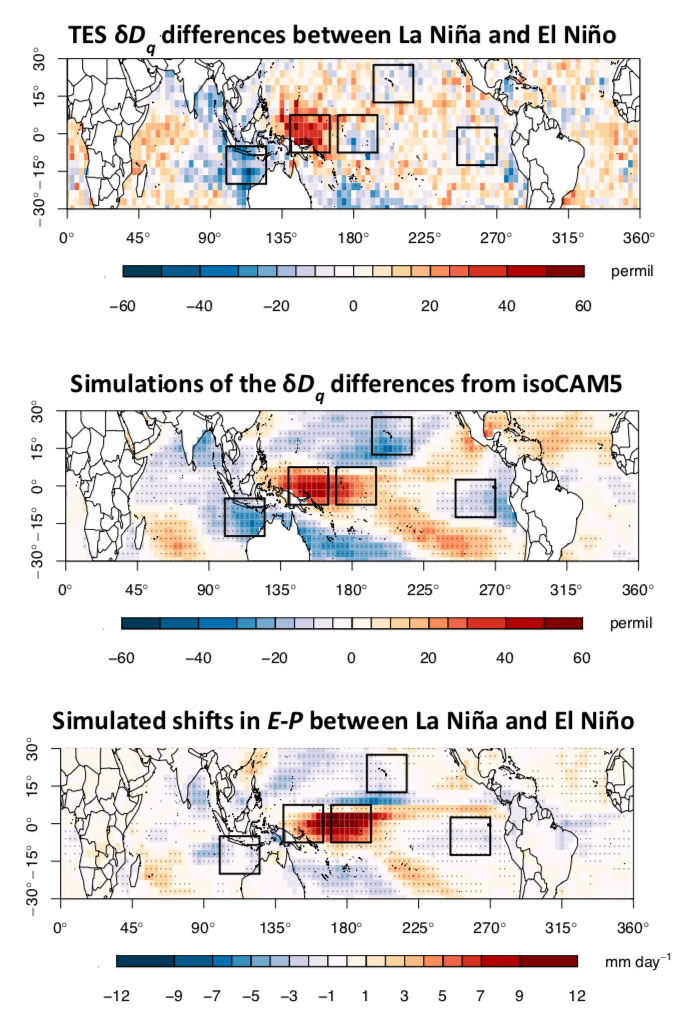Science
Detecting Shifts in Tropical Moisture

Scientists are learning how to quantify one key aspect of the elusive balance between tropical evaporation and precipitation rates, from clues provided by unique dataset: water vapor isotopes. Results from traditional ground-based measurements alone are too limited to detect large scale evaporation and precipitation rates, but the remote sensing capabilities of NASA’s Tropospheric Emission Spectrometer (TES) instrument on Aura are proving to be, well, a breath of fresh air.
As global temperatures rise, we need increasingly accurate methods to track the ways the water cycle is changing. Knowing which parts of the water cycle are the most important, and then measuring them in sufficient detail to be meaningful, has been quite challenging…until now. One of the areas where we can now measure more accuracy is in the regional imbalances between rain and evaporation. Where these imbalances occur gives us an important clue on how water can fundamentally reorganize the atmosphere.
Water vapor isotopes are sensitive to the evaporation and condensation history of water. When it rains, these isotopes fall out of the sky a little more than regular water but the opposite occurs during evaporation. Knowing that difference tells us more about what water vapor has gone through as it is blown by the winds.
TES is one of the few satellites that can make these difficult measurements in the troposphere. Scientists used this data to create a new score for how big imbalances are between evaporation and rain. They showed that this score effectively tracks big changes in the effects of large storms on the water cycle, such as during El Ninos and La Ninas. This data scores how well climate models can represent these processes, giving us greater confidence in predicting how the water cycle may change in the future.
Scientists can predict with some confidence that evaporation and rain will become more extreme as global temperatures rise. In other words, wet areas will get wetter and dry areas will get drier. Longer records of these data will allow us to keep score.
Citation: Bailey, A., P. N. Blossey, D. Noone, J. Nusbaumer, and R. Wood, “Detecting shifts in tropical moisture imbalances with satellite-derived isotope ratios in water vapor,” J. Geophys. Res. Atmos., 122, 5763-5779, https://dx.doi.org/doi:10.1002/2016JD026222, 2017.
Mission Highlights
Swipe to view more highlights
Loading mission highlights...